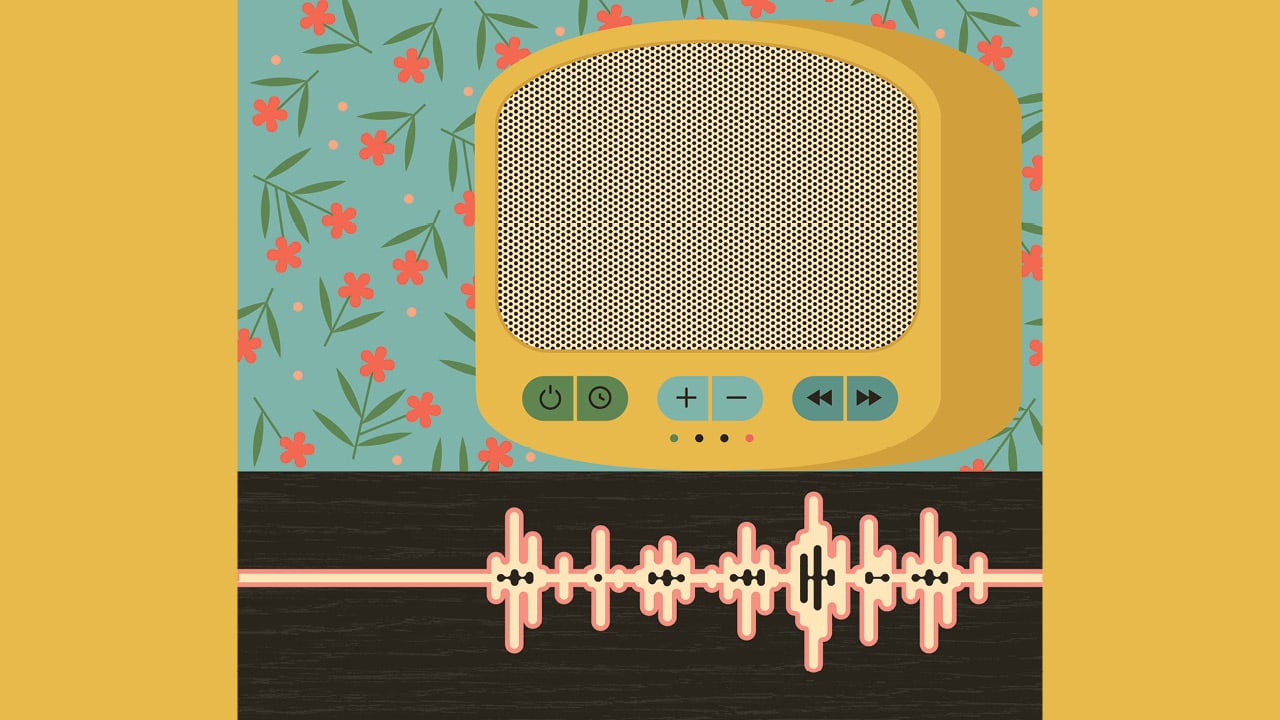Here’s the latest research on lulling your baby to sleep with white noise and sound machines. (Also, what the heck is pink noise?)
Ever since we sleep-trained our first baby, I’ve been a white noise advocate—even packing our white noise machines for both kids when we fly across the country to visit family, and making an emergency last-minute run to Walmart to replace one that broke on the trip. I’m now considering upgrading to a machine that includes what’s called pink noise after learning that studies suggest this more natural sound range might help kids sleep better.
At the same time, other parents—and my in-laws—swear that their kids became good sleepers because the family never restricted noise around them and the babies learned to sleep through anything.
So who’s right? Here’s what you need to know.
The benefits of white noise
Although it’s counterintuitive, most newborns sleep better with noise in the background than they do in silence.
“The infant has spent those many months in the womb, and they would have heard a sort of shushing, swishing sound inside,” says Robyn Stremler, a nurse, sleep researcher and associate professor at the University of Toronto. “White noise can help to mimic that.”
One small study published in the BMJ (formerly known as the British Medical Journal) found that newborns who fall asleep in rooms with white noise are more likely to fall asleep within five minutes and that they sleep longer stretches while it’s on.
Not all babies will need that noise as they grow into toddlers—it seems to depend on the child’s temperament, says Wendy Hall, a sleep specialist and professor emerita in UBC’s School of Nursing. “You could put some kids to sleep in the middle of a loud dinner party and they’d sleep,” she says. “But often the families I work with will tell me they have a child that is an incredibly light sleeper, and they will wake up when there’s any noise around them, even if they’re sound asleep.”
If you live in a smaller space or a noisier neighbourhood, white noise can help mask the sudden bursts of sounds that wake kids up, like loud traffic or a sibling yelling.
Is “pink noise” better than white?
White noise includes the whole spectrum of sound—from very low noises to very high ones. The whirr of a fan or static from a radio set between stations are both examples of white noise. Pink noise includes fewer of the high frequencies and is common in nature—wind, rain or a heartbeat are all pink noise. But it’s important to look for sounds that are consistent, like rainfall, rather than recordings that contain bursts of noise, like periodically whooshing ocean waves, whale sounds or crickets chirping, which might startle a baby awake.
Some people find it difficult to sleep when listening to the hiss of white noise and prefer instead the more neutral sound of pink noise. There is quite a bit of evidence to suggest pink noise can be beneficial. “Studies report that people fall asleep faster and move into deeper, non-REM sleep more quickly and for longer if they’re exposed to pink noise,” says Hall.
A 2012 study published in the Journal of Theoretical Biology, for example, found that when adults slept with pink noise, their brainwaves changed and they spent more time in deep sleep. Another found that using pink noise during sleep helped boost adults’ memory. Hall points out important caveats, though: These are smaller studies, and they look at adults, not kids. They also compare pink noise to silence, not to white noise.
No matter what kind of noise you choose, if any, there’s the risk of hearing damage if it’s too loud. A study from researchers at Toronto’s Hospital for Sick Children found that many white noise machines go up to unsafe levels, with some maxing out at 85 decibels—that’s as loud as a hair dryer. Having the machine on that loud puts babies at risk for hearing loss over time. The researchers recommend parents put the machine as far away from baby’s bed as possible and to keep the volume low—ideally to 50 decibels (about as loud as a regular conversation). And pink noise is likely safer, says Hall. “It’s at the lower-frequency end of the spectrum, and because the human ear is less sensitive to low-frequency sounds than it is to high-frequency sounds, it has less potential to harm your hearing.”
The SickKids researchers also recommend setting the white noise machine to shut off after the baby falls asleep, though Hall says that’s not reasonable, since babies who fall asleep with noise will need to hear the sound throughout the night as well. “Your child’s going to wake up looking for that sound if it isn’t there,” she explains. When you turn on white or pink noise at bedtime, babies form form a sleep association with it—in other words, they’ll always need it to fall asleep. That’s not necessarily a bad thing, says Stremler, because it’s very common for babies to form a sleep association with something that happens before bedtime.
“There are lots of things kids can associate with sleep: being rocked, breastfeeding, twirling Mom’s hair,” she says. White and pink noise, which don’t require much from the parents, isn’t so bad in comparison.
